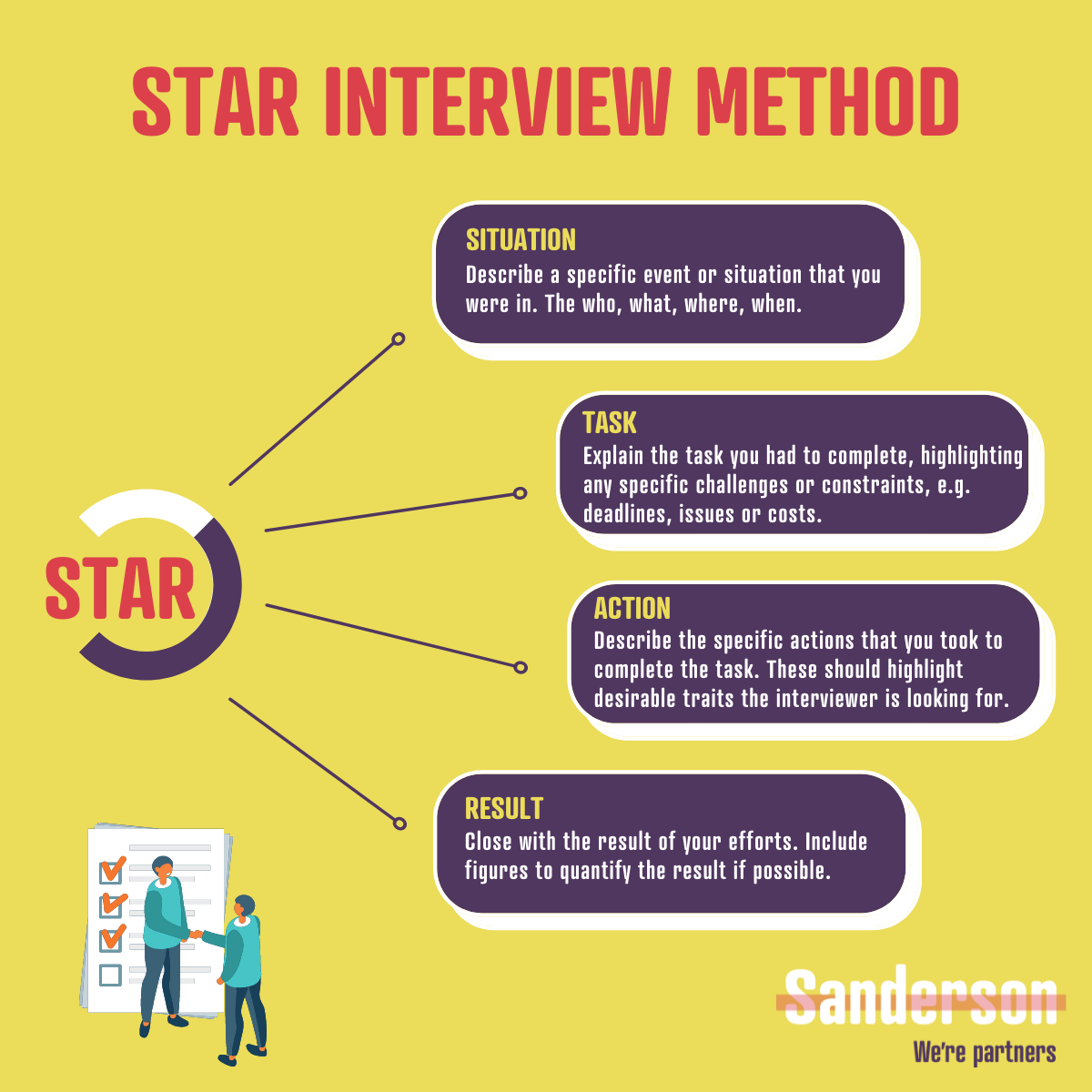- Home
- WELCOME TO THE NEWSROOM
- How to Use the STAR Method to Answer Interview Questions
How to Use the STAR Method to Answer Interview Questions
Written by Amanda Souza | News | Blog | Posted 12/04/2022 12:00:03

Preparing your answers for a prospective job interview is always daunting. To help combat unknown behavioral questions and mid-interview nerves, try using the STAR method of responding to questions. STAR (Situation Task Action Result) allows you to structure your responses in a way that optimises your skills and interviewers’ understanding of you. STAR responses can be prepared in advance so you can comfortably discuss your strengths in the workplace and give real-life examples to your potential employers of your skills in action. But how do you use it, and what might each section of a STAR answer to a question look like?
Situation: At its core, a STAR answer is a mini-story, presenting conflict, action, and resolution, with your desirable skills at the centre. As with any story, you need to set up the situation and provide context for the events that you are about to discuss. This should be the shortest part of your STAR answer – refer to your role here then on to the more interesting parts of your answer.
Eg: Say that you’re preparing for an engineering interview with a major technology company. Maybe in your current job, your team was producing a product but realised days before release, that there was an error in the code that meant it wouldn’t work correctly for users.
Task: Describe your role in the situation: what did others expect of you? What challenge or problem were you facing? What was your role in contributing to the resolution?
Eg: In our example, your task would be to find the bug in the code and fix it, making sure the product would be usable.
Action: What did you specifically do to solve the problem in front of you or manage the situation? You want to present this in a way that demonstrates the skills required of you in the job that you are interviewing for. Remember, even if you undertook these actions as part of a team, refer to yourself when discussing what you did – you are the candidate being interviewed, and your skills should be the focus of the story.
Eg: In our example, maybe you were the one who suggested that the testing only be done internally once the error was fixed, instead of the usual external market testing and validation, as it would be enough to make sure the product was ready before the deadline.
Result: What was the outcome of the actions you took, in the immediate short term and the longer term? What effect did it have on your job role after that day?
Eg: You got your manager, other engineers, and the product team to agree with your plan and work together to implement the fixes and tests, meaning that the product could be released as scheduled, and your manager recommended you for a promotion.
Ultimately, the STAR method is useful to help you structure your answers and feel confident in your interview so that you can put your best foot forward and shine as a candidate.
Looking for more interview tips? Please follow us:
Follow Us on LinkedIn
Follow Us on Instagram